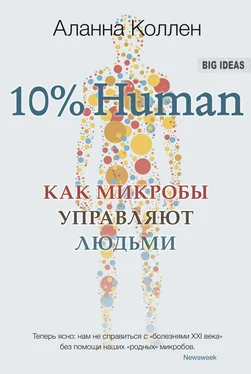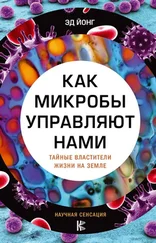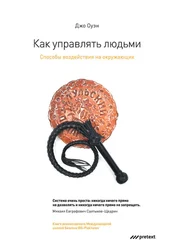3. Se Jin Song, B.S., Dominguez-Bello, M.-G. and Knight, R. (2013). How delivery mode and feeding can shape the bacterial community in the infant gut. Canadian Medical Association Journal 185: 373–374.
4. Kozhumannil, K.B., Law, M.R. and Virnig, B.A. (2013). Cesarean delivery rates vary tenfold among US hospitals; reducing variation may address quality and cost issues. Health Affairs 32: 527–535.
5. Gibbons, L. et al . (2010). The global numbers and costs of additionally needed and unnecessary Caesarean sections performed per year: Overuse as a barrier to universal coverage. World Health Report Background Paper , No. 30.
6. Cho, C.E. and Norman, M. (2013). Cesarean section and development of the immune system in the offspring. American Journal of Obstetrics & Gynecology 208: 249–254.
7. Schieve, L.A. et al. (2014). Population attributable fractions for three perinatal risk factors for autism spectrum disorders, 2002 and 2008 autism and developmental disabilities monitoring network. Annals of Epidemiology 24: 260–266.
8. MacDorman, M.F. et al. (2006). Infant and neonatal mortality for primary Cesarean and vaginal births to women with ‘No indicated risk’, United States, 1998–2001 birth cohorts. Birth 33: 175–182.
9. Dominguez-Bello, M.-G. et al. (2010). Delivery mode shapes the acquisition and structure of the initial microbiota across multiple body habitats in newborns. Proceedings of the National Academy of Sciences 107: 11971–11975.
10. McVeagh, P. and Brand-Miller, J. (1997). Human milk oligosaccharides: Only the breast. Journal of Paediatrics and Child Health 33: 281–286.
11. Donnet-Hughes, A. (2010). Potential role of the intestinal microbiota of the mother in neonatal immune education. Proceedings of the Nutrition Society 69: 407–415.
12. Cabrera-Rubio, R. et al. (2012). The human milk microbiome changes over lactation and is shaped by maternal weight and mode of delivery. American Journal of Clinical Nutrition 96: 544–551.
13. Stevens, E.E., Patrick, T.E. and Pickler, R. (2009). A history of infant feeding. The Journal of Perinatal Education 18: 32–39.
14. Heikkilä, M.P. and Saris, P.E.J. (2003). Inhibition of Staphylococcus aureus by the commensal bacteria of human milk. Journal of Applied Microbiology 95: 471–478.
15. Chen, A. and Rogan, W.J. et al. (2004). Breastfeeding and the risk of postneonatal death in the United States. Pediatrics 113: e435–e439.
16. Ip, S. et al. (2007). Breastfeeding and maternal and infant health outcomes in developed countries. Evidence Report/Technology Assessment (Full Report) 153: 1–186.
17. Division of Nutrition and Physical Activity: Research to Practice Series No. 4: Does breastfeeding reduce the risk of pediatric overweight? Atlanta: Centers for Disease Control and Prevention, 2007.
18. Stuebe, A.S. (2009). The risks of not breastfeeding for mothers and infants. Reviews in Obstetrics & Gynecology 2: 222–231.
19. Azad, M.B. et al. (2013). Gut microbiota of health Canadian infants: profiles by mode of delivery and infant diet at 4 months. Canadian Medical Association Journal 185: 385–394.
20. Palmer, C. et al . (2007). Development of the human infant intestinal microbiota. PLoS Biology 5: 1556–1573.
21. Yatsunenko, T. et al. (2012). Human gut microbiome viewed across age and geography. Nature 486: 222–228.
22. Lax, S. et al. (2014). Longitudinal analysis of microbial interaction between humans and the indoor environment. Science 345: 1048–1051.
23. Gajer, P. et al. (2012). Temporal dynamics of the human vaginal microbiota. Science Translational Medicine 4: 132ra52.
24. Koren, O. et al. (2012). Host remodelling of the gut microbiome and metabolic changes during pregnancy. Cell 150: 470–480.
25. Claesson, M.J. et al. (2012). Gut microbiota composition correlates with diet and health in the elderly. Nature 488: 178–184.
Глава 8
1. Metchnikoff, E. (1908). The Prolongation of Life: Optimistic Studies . G.P. Putnam’s Sons, New York.
2. Bested, A.C., Logan, A.C. and Selhub, E.M. (2013). Intestinal microbiota, probiotics and mental health: from Metchnikoff to modern advances: Part I – autointoxication revisited. Gut Pathogens 5: 1–16.
3. Hempel, A. et al. (2012). Probiotics for the prevention and treatment of antibiotic-associated diarrhea: A systematic review and metaanalysis. Journal of the American Medical Association 307: 1959–1969.
4. AlFaleh, K. et al. (2011). Probiotics for prevention of necrotizing enterocolitis in preterm infants. Cochrane Database of Systematic Reviews , Issue 3.
5. Ringel, Y. and Ringel-Kulka, T. (2011). The rationale and clinical effectiveness of probiotics in irritable bowel syndrome. Journal of Clinical Gastroenterology 45(S3): S145–S148.
6. Pelucchi, C. et al. (2012). Probiotics supplementation during pregnancy or infancy for the prevention of atopic dermatitis: A meta-analysis. Epidemiology 23: 402–414.
7. Calcinaro, F. (2005). Oral probiotic administration induces interleukin-10 production and prevents spontaneous autoimmune diabetes in the nonobese diabetic mouse. Diabetologia 48: 1565–1575.
8. Goodall, J. (1990). The Chimpanzees of Gombe: Patterns of Behavior. Harvard University Press, Cambridge.
9. Fritz, J. et al. (1992). The relationship between forage material and levels of coprophagy in captive chimpanzees (Pan troglodytes). Zoo Biology 11: 313–318.
10. Ridaura, V.K. et al. (2013). Gut microbiota from twins discordant for obesity modulate metabolism in mice. Science 341: 1079.
11. Smits, L.P. et al. (2013). Therapeutic potential of fecal microbiota transplantation. Gastroenterology 145: 946–953.
12. Eiseman, B. et al. (1958). Fecal enema as an adjunct in the treatment of pseudomembranous enterocolitis. Surgery 44: 854–859.
13. Borody, T.J. et al. (1989). Bowel-flora alteration: a potential cure for inflammatory bowel disease and irritable bowel syndrome? The Medical Journal of Australia 150: 604.
14. Vrieze, A. et al. (2012). Transfer of intestinal microbiota from lean donors increases insulin sensitivity in individuals with metabolic syndrome. Gastroenterology 143: 913–916.
15. Borody, T.J. and Khoruts, A. (2012). Fecal microbiota transplantation and emerging applications. Nature Reviews Gastroenterology and Hepatology 9: 88–96.
16. Delzenne, N.M. et al. (2011). Targeting gut microbiota in obesity: effects of prebiotics and probiotics. Nature Reviews Endocrinology 7: 639–646.
17. Petrof, E.O. et al. (2013). Stool substitute transplant therapy for the eradication of Clostridium dififcile infection: ‘RePOOPulating’ the gut. Microbiome 1: 3.
18. Yatsunenko, T. et al. (2012). Human gut microbiome viewed across age and geography. Nature 486: 222–228.
19. И. Мечников. Этюды оптимизма. М.: Наука, 1988. С. 68.
Заключение
1. Markle, J.G.M. et al. (2013). Sex differences in the gut microbiome drive hormone-dependent regulation of autoimmunity. Science 339: 1084–1088.
2. Franceschi, C. et al. (2006). Inflammaging and anti-inflammaging: a systemic perspective on aging and longevity emerged from studies in humans. Mechanisms of Ageing and Development 128: 92–105.
Читать дальше
Конец ознакомительного отрывка
Купить книгу












